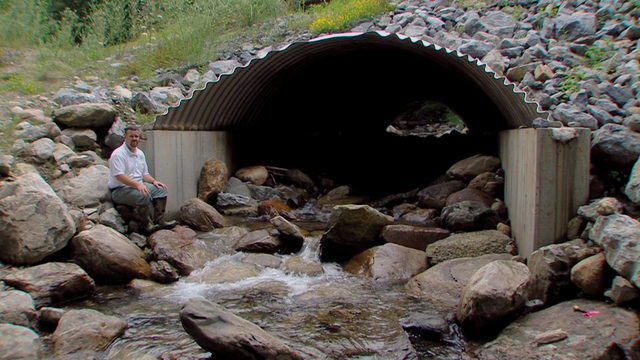Vermont’s recovery from Tropical Storm Irene, which made landfall a little less than a year ago, has provided unique opportunities for federal, state and local partnerships. One example is how FEMA has been collaborating with state, federal and community partners to support damaged fish habitats in Vermont, a state where fishing annually generates at least $63 million.
Half of the fish were wiped out by Tropical Storm Irene in Vermont, a state where the culture and history of fishing is as important as their economic benefits.

A submerged GoPro high definition camera captures underwater footage of juvenile brook trout in Rochester, Vt. Footage of the fish, a native Vermont species that was impacted by Tropical Storm Irene, is included in a FEMA video about fish habitat recovery in Vermont. Click here to view the video to learn more about this project.
In the town of Rochester, environmental recovery has brought many players to the table. FEMA is working in concert with the White River Partnership, the town of Rochester, Vermont’s Department of Fish and Wildlife, the U.S. Fish and Wildlife Service’s National Fish Passage Program, and the U.S. Forest Service.
The White River Partnership, a South Royalton, Vt.-based non-profit organization, worked with the town of Rochester to secure enhancement funding. Culverts, which clogged and failed during the flooding caused by Tropical Storm Irene, will be rebuilt stronger and larger to handle more storm debris.
What’s more, the culverts will be enhanced with sand, rocks and other elements to mimic natural, more eco-friendly passages for fish.

Above: U.S. Forest Service Civil Engineer Brian Austin sits outside a culvert on a tributary running through the Moosalamoo National Recreation Area in Arlington, Vermont. Damaged culverts in Rochester, Vermont will be similarly reconstructed, using rocks and sand to simulate a natural fish passage.
As many as three culvert installations may be completed during the 2012 season; the remaining four will likely be completed in 2013.
One creative approach in the process will be to replace a culvert that was damaged in the Woodlawn Cemetery in Rochester with a discarded bridge the U.S. Fish and Wildlife Service recycled from a salvage yard. Reclaiming and repurposing the discarded bridge will cost just $8,500, saving the city and federal governments thousands of dollars.

White River Partnership Executive Director Mary Russ explains how a bridge reclaimed from a salvage yard will be recycled to be used as a replacement for a culvert that was impacted by Tropical Storm Irene. The bridge will replace a culvert over Nason Brook in the Woodlawn Cemetery in Rochester, Vermont.
The efforts to preserve fish habitats in Vermont is just one way FEMA works to preserve and protect the environment after a disaster. Visit FEMA.gov for more on FEMA’s environmental and historical preservation.

Add new comment